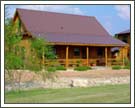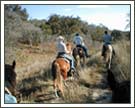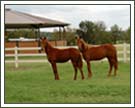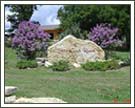Taken from an article in
the Luckenbach Moon
Everybody's Somebody
By Becky Crouch Barrales
Tales of Sisterdale, Now and Then
(Conversation with a cowboy guru, Ramond
Kuhlmann)
Sisterdale, south of Luckenbach on FM
1376, has always held a nostalgic enchantment for me.
It is impressive knowing that the "Freethinker"
Germans (Freier Verein) settled there in 1848, before
Comfort. It became known as a sanitarium for the sick,
who healed by the fresh water cures written about by Dr.
Kapp. How worldly it is for its founder Nicholas Zink
to have built roads in Greece from 1821 - 1829 before coming
to Texas. How interesting that curious Latin students
trek to the cemetery where they can read headstones in
Latin, proof that the intellectual Germans read and spoke
the dead language of Latin. And how hard it must have
been for my grandmother, Dora Neunhoffer Stieler, to get her
horse and buggy hitched by 4 am and travel from Stieler Hill
in Comfort down to teach school in Sisterdale every
day. It was 1929 at Sisterdale that my grandfather
Adolf Stieler worked sheep, goats, and cattle on his Block
Creek Ranch (where brother Juan now lives). Hondo and
Raymond Kuhlmann were Adolf's working partners. They
also leased all the neighboring ranches, all the way to
Blanco. So at the Home Ranch in Comfort I always head
names of leased ranches like the Wenzel, the Manchaca, the
Section, the 320, the Franklin, the Esperanza.
Sister
Creek Ranch is a new neighbor to my brother's Block Creek
now. Beth and Bruce Johnson from Dallas bought 700
acres and within only one year realized their dream of
building a horse center with boarding facilities, and rocky
trail rides on smooth-stepping Tennessee Walkers.
Bruce and Beth are "Luckenbach Regulars", and in a
short time have earned the membership of "the
locals" as they love to gather often on the big log
under the big oaks with other Regulars. They lived out
of an RV for a year while they built their little
"town", Kickback Flats. We were all amazed
that they 1.) completed it and 2.) that everything is new.
On
May 3rd they celebrated their grand opening. The
ticket into the gate was a bag of litter picked up off
FM1376. Part country club manicure and part natural
landscape, tall sycamores quaked their leaves over man-made
dams and rack waterfalls that even Disney would envy for a
theme park. Wide-open fields of coastal war edged by
the tamed creek, no longer a trickle but a thigh high wading
pool. We were towed to headquarters by an
air-conditioned tractor pulling a flatbed of hay
bales. Regulars Gordon, CW, and Butch climbed on board
with Oscar and me, guitars in hand. Four wranglers on
horseback escorted us to the main station. One, named
Wayno (Bueno without the b), had a white horse and beard to
match. New white plastic panels fenced in
horses. No barbed wire here.
We were greeted by our
hosts who, like all their helpers, were wearing blue
bandanas and cream-colored Wrangler shirts with the
embroidered ranch logo. Our eyes pooped out at everything
wonderful, the 100' x 250' arena floored with rubber chips,
making it easy on horses' feet. The impeccable new
horse barn for four was crowned with Bruce and Beth's
apartment. The nest of buildings included a covered
round pen, two bed and breakfast Guest Houses complete with
Pottery Barn quilts, an office, and an air-conditioned bar -
with pool tables and TV.
At 2:30 we all gathered around
the arena to see the Guadalupe County True Women's drill
team present the Colors. Blacks, appaloosa, buckskin,
chestnut sped around the arena sporting saddle blankets in
hot colors, dittoed by their riders' wildrags. I
spotted 85-year-old Ramond Kuhlmann observing from his
wheeled walker perch. My mother had brought him from
the nursing home for this event. After all, this brand
new stuff was on land he knew like the backs of his
arthritic hands. Time moves and things change.
But there sat a true cowboy guru who'd been through hard
scrabbles.
From where Raymond sat you could see to the
south of us the Block Creek's Thunder Mountain. It's the
highest elevation in the whole area, nostalgic to both Juan
and Raymond. I wondered what Raymond was
thinking. Although he's lost his hearing he has a
memory like a computer. For example, during the 8 year
drought of the Fifties he told me that on April 1, 1955,
Henry Howel, weatherman for WOAL, reported no rain.
"Hondo and I walked our horses across a dry Big Sandy
River. When we returned with goats we had to swim them
and our horses across."
How land is gained and lost
holds intriguing stories. If you want to stick with
me, hang on. It took Raymond and Juan 30 min6ttes to
explain the politics of the land we were sitting on
now. It's my bad memory that will probably relay it in
error. In the Fifties Hondo and Raymond leased
neighboring land to the Block Creek called the Wenzel and
the Manchaca. Years ago Manchaca, a Mexican laborer,
came from Sierra Blanca, Texas to work on the Wenzel
ranch. Old man Wenzel had on daughter, Fina, paralyzed
in a wheel chair. Wenzel left his 3200-acre ranch to
his crippled child. Manchaca and Fina eventually
married. Emmie Wenzel and cousins claimed that when
Manchaca died the land had to go back to Wenzel heirs.
But that was not true.
When Hondo and Raymond tried to buy
300 acres from the Manchacas a Boerne judge advised them
against it until the records got cleared up. This
bought time for Cadena, a security guard claiming to be a
Texas Ranger, to try to lease the Manchaca. However,
he sneakily deeded the Section and the 320 to himself.
Manchaca, thinking it was a lease, signed the deeds.
Manchaca hired a lawyer, got his land back, but the lawyer
charged him more than the land was worth. So he hired
lawyers to fight the lawyer. Meanwhile, Emmie took her
case to her case to the State Supreme Court and lost.
The land reverted back to the 4 Manchaca children who ended
up with only 1700 acres after the lawyers were paid.
Part of what the Johnson's have now is the mere 170 acres
the 2 Manchaca sisters ended up with. In spite of
coyotes, eagles, lawyers, and screwworm we've learned to
survive.
We feasted on catfish and hush puppies at tables
spread under shady trees. Sitting at our table was Lee
Roy Knueper, 85-year-old Sisterdale native. I asked
him when was the latest date he plowed his fields with
horses. He said 1946. Raymond said they put up
telephone lines at the Block Creek in 1955. But every
time there was lightning and thunder the lines died. I
enjoyed talking to these old timers who got to know
intimately or cruelly every acre around here. Although
we were surrounded by luxury and pleasure, all things new
and clean, good food, music, and company, Raymond's eerie
story og the Mexican eagles haunted me. At this moment
it seemed to me that the rocky hardships of the past are now
top-coated with the soft rubber chips of the present to ease
and speed up our journey.
It was in the late Sixties at
the Block Creek. Raymond had just marked 250 kid
goats. Marked means castrating and cutting notches in
their ears. Muttons got a "half crop" on the
right ear and nannies got a "swallow fork under
bit" on the left. Days later, crossing the
Divide, he saw from a distance an eagle swoop down and come
up with a kid goat. At about 200 feet up the eagle
would drop the goat to kill it and dive down again to
retrieve it. Raymond followed. Upon opening a gap he
smelled something. He followed his nose in 4
directions but couldn't find anything...until he looked
up. Draped on the bare limbs of the live oaks were 200
of his 250 kid goats with their eyes pecked out - all killed
by the Mexican eagles.
"They only came in May and
then return to Mexico," Raymond said. I asked him
if he'd ever killed any. Only one he said. He
watched every night where one would land on a point, a bluff
or ridge between canyons. "I waited 'til
midnight, took a dog and gun. It was a clear night and
you can see a form in a leafless tree. They won't
leave their tree at night. That's the only way you can
approach one." the eagles are still here but they
don't flock to one place due to lack of large herds of sheep
and goats. They feed on rabbits now, Raymond
explained. "I almost knocked one out of the claws
of a heavy-laden eagle with my hand, but he dripped it right
by my horse."
Well-watered and fed the crowd of about
200 guests were asked to move over to the Sister Creek Ranch
bar where The Cosmic Dust Devils were stirring up some
stormy Music. Raymond rolled his walker over to the
loud atmosphere and sat stoically with his hearing aid on
overload. Thunder Mountain loomed in the silent
distance under the quiet haze over the Block Creek.
"I
don't want my ashes put on Thunder Mountain anymore,"
"Raymond confided. "Too much
commotion. I carry my memories with me. I could
get up the east side of Thunder Mountain with a 4-wheel
drive. But I liked the south side. It's hard to
get up it even on a horse." Raymond concluded.
I'd
top Thunder Mountain at 5:30am. I could see the whole world
from up there. All the neighbors - Hubert Smith,
Eucker, Bill Whitworth, Manchaca. Since you didn't
talk to your neighbors much, about all I could do to check
on them was to see when they got up in the morning by
watching when the smoke came outa their chimneys.
Everyone cooked with wood back then."
Becky
Crouch Barrales
Writer
P.S. "Still is still movin' for me." - a
song Willie Nelson sings












